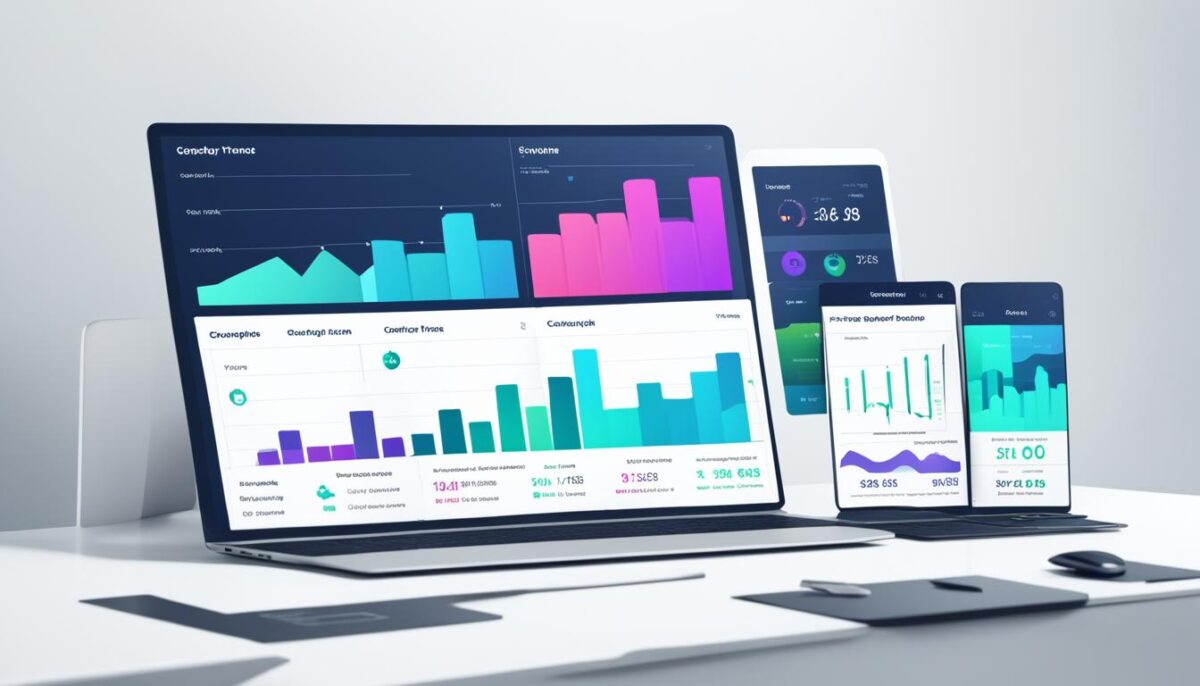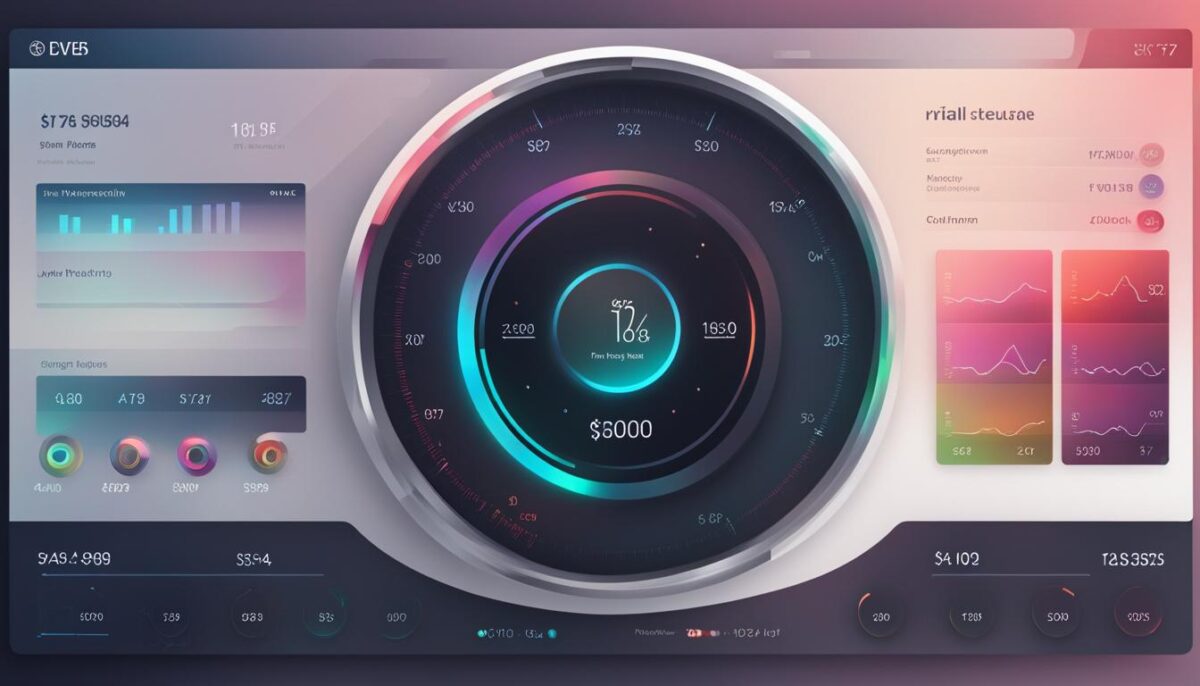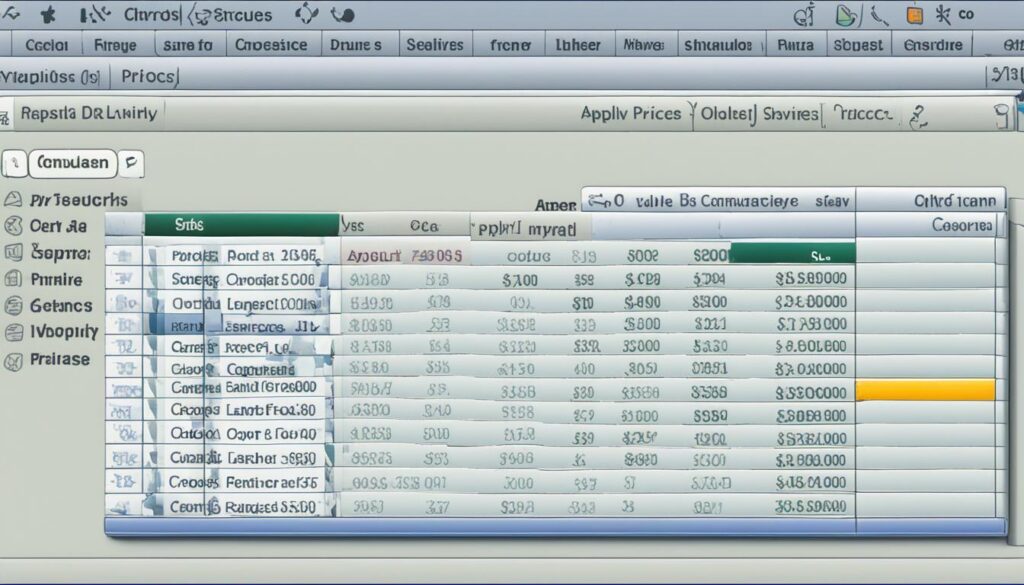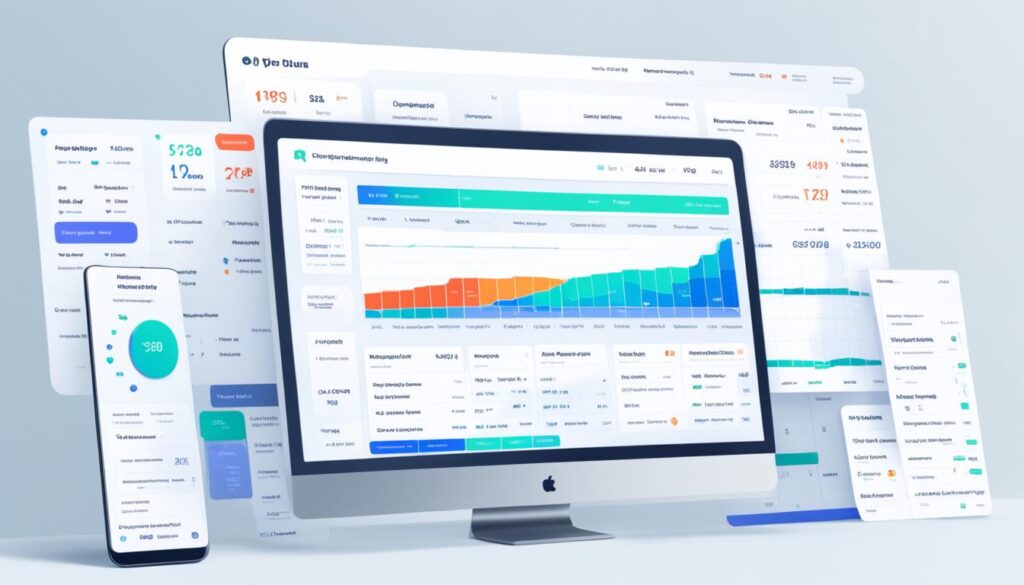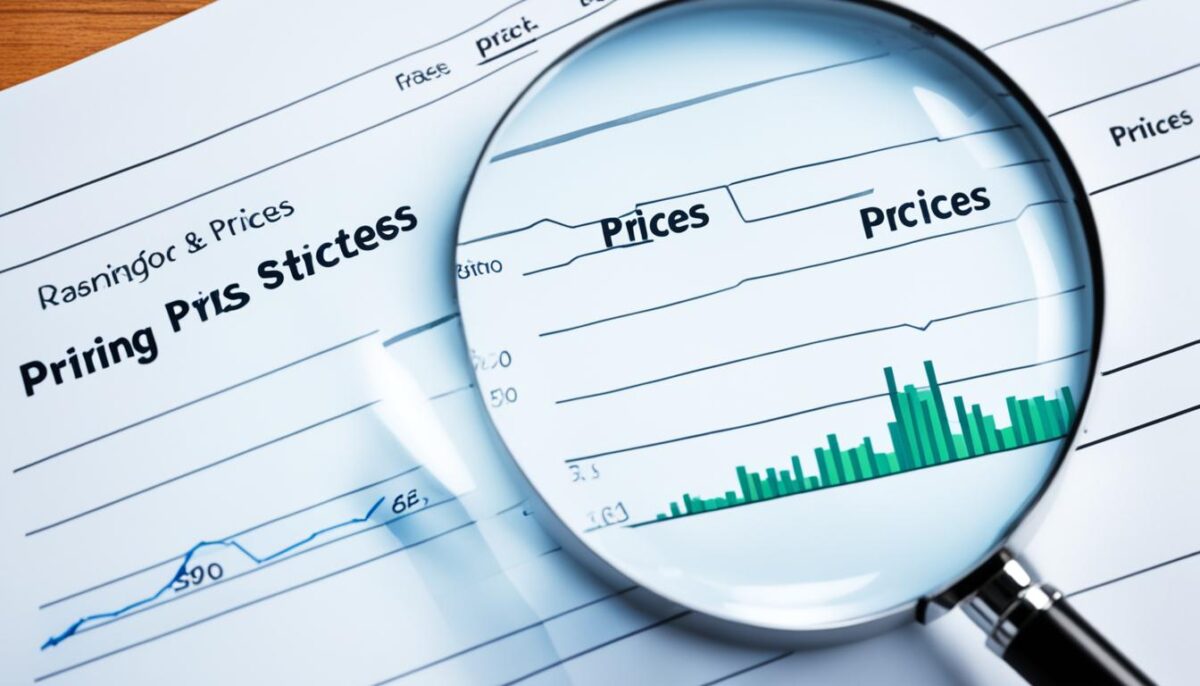Optimize Pricing with Top Software Solutions
Are you looking to unlock your business’s earning potential through effective pricing strategies? Look no further than price optimization software. By utilizing dynamic pricing capabilities and advanced pricing analytics, businesses can optimize revenue and enhance overall pricing intelligence.
In this article, we’ll explore the top software solutions available for pricing optimization and delve into the key factors to consider when implementing pricing strategies, as well as the benefits of using dynamic pricing software. We’ll also cover the essential features to look for when selecting price optimization solutions, best practices for implementation, and real-world case studies highlighting successful pricing strategies.
Key Takeaways:
- Price optimization software is a crucial tool for businesses looking to achieve competitive and profitable pricing strategies.
- Dynamic pricing capabilities and advanced pricing analytics can help businesses optimize revenue and enhance pricing intelligence.
- When selecting price optimization solutions, consider essential features and capabilities, such as real-time data integration and scalability options.
- Implementing successful pricing optimization requires setting clear pricing objectives and regularly analyzing pricing data.
- Real-world case studies illustrate the effectiveness of various pricing strategies and the impact of price optimization software on revenue growth.
The Importance of Pricing Strategy
Setting prices for your products or services is just as important as choosing the right marketing strategy. A well-established pricing strategy can help businesses reach their revenue optimization goals and increase profitability. However, determining the optimal price point can be challenging, especially in today’s competitive market. That’s where pricing strategy comes into play.
The first step in developing a pricing strategy is to determine what your company wants to achieve. Whether it’s revenue growth, market share, or profitability, clearly defined objectives will help guide your pricing decisions. Next, consider the key factors that influence pricing, such as production costs, competition, and consumer demand.
Price optimization software can assist businesses in creating a competitive and profitable pricing strategy. By utilizing advanced pricing analytics, companies can gather insights on pricing trends, identify pricing opportunities, and optimize prices in real-time to maximize revenue and profits. With the help of such software, businesses can create a revenue optimization strategy that is customized to meet their specific objectives and goals.
Key factors to consider when developing a pricing strategy:
- Research and analyze the market to determine what your competitors are offering
- Understand your customer’s willingness to pay and align pricing accordingly
- Create a value proposition that supports your pricing strategy
- Regularly monitor market conditions and adjust pricing as needed
“The price of prosperity is justifiably high.” – William Randolph Hearst
Understanding Price Optimization Software
Price optimization software is a powerful tool that enables businesses to implement pricing strategies based on comprehensive, data-driven insights. To make the most of this technology, it’s crucial to understand its features and functionalities, including:
- The ability to analyze large volumes of pricing data in real-time
- Streamlining of pricing processes, saving time and improving efficiency
- Integration with other software tools such as CRM and ERP systems
- Customization options to suit unique business needs
- Reporting and analytics for enhanced pricing intelligence
Price management software and pricing tools help businesses make informed, data-driven pricing decisions. Advanced analytics enable businesses to identify trends and patterns, detect market changes, and adjust pricing strategies accordingly. All these features provide businesses with the competitive edge necessary to achieve revenue goals.
Benefits of using a pricing tool for your business
Embracing price optimization software provides a number of benefits to businesses:
“The use of pricing software has evolved in recent years, with more and more businesses recognizing the benefits of real-time market analysis, automated rule-based pricing, and specialized pricing algorithms for different channels.”
Some of the main benefits of using a pricing tool in your business include:
| Benefit | Description |
|---|---|
| Improved revenue | Price optimization software can help generate higher revenues by accurately setting prices that reflect customer demand and market conditions. |
| Enhanced competitiveness | Dynamic pricing software can help businesses stay competitive by ensuring they have relevant pricing information, can quickly respond to market changes and adjust pricing strategies accordingly. |
| Better accuracy | Price management software provides better pricing accuracy by analyzing customer behavior and market trends to adjust pricing strategies and optimize revenue. |
| Increased efficiency | Pricing tools automate pricing decision-making processes, which saves businesses time and money compared to manual pricing strategies. |
| Improved pricing intelligence | With comprehensive reporting and analytics, price optimization software provides valuable insights into pricing strategies, including competitor pricing and market trends. These insights refine pricing strategies and provide useful market intelligence. |
By utilizing a pricing tool, businesses can optimize prices, improve revenue, and stay competitive in an ever-changing market.
Benefits of Dynamic Pricing Software
Dynamic pricing software offers numerous advantages for businesses looking to optimize revenue generation with effective pricing strategies. By utilizing pricing analytics and price intelligence, companies can adapt to market fluctuations and stay ahead of the competition.
One of the main benefits of dynamic pricing software is its ability to analyze market data in real-time and adjust pricing accordingly. This not only allows businesses to maximize revenue opportunities but also ensures that prices remain competitive, attracting and retaining customers.
Additionally, dynamic pricing software enables businesses to segment customers and offer customized pricing, leading to increased customer loyalty and satisfaction. By setting prices based on individual customer behavior, businesses can tailor their pricing strategies to meet the unique needs and preferences of their audience.
Furthermore, dynamic pricing software facilitates price optimization by providing businesses with the tools necessary to analyze data and identify trends. This enables them to create more accurate forecasts and make data-driven decisions, resulting in increased profitability and growth.
Implementing dynamic pricing software can make a significant impact on a business’s revenue generation and overall success. By utilizing pricing analytics and price intelligence, companies can unlock their earning potential and stay ahead of the competition.
Real-World Example:
“By implementing dynamic pricing software, Synthesis Labs was able to adapt to market changes and consistently offer competitive prices. This led to a 20% increase in revenue and greater customer satisfaction.”
Key Features to Look for in Price Optimization Solutions
When selecting price optimization solutions for your business, it’s crucial to consider key features and capabilities that align with your pricing objectives. Some of the essential features to look for in price optimization software include:
- Pricing Analytics: Accurate and real-time pricing analytics capabilities enable businesses to make data-driven decisions and adjust prices according to market trends and competition.
- Real-time Data Integration: The ability to integrate real-time data from multiple sources ensures that businesses always have up-to-date information to make informed pricing decisions.
- Advanced Pricing Models: Advanced pricing models such as value-based pricing and dynamic pricing offer businesses greater flexibility in setting optimal prices to maximize revenue.
- Customization Options: Customization options allow businesses to tailor the software to their unique pricing objectives and workflows.
- Reporting and Visualization: Detailed reporting and visualization capabilities enable businesses to quickly identify pricing trends and opportunities for revenue growth.
By selecting a price optimization solution with these key features, businesses can implement effective pricing strategies and improve their pricing intelligence.
Implementing Price Optimization Software
Integrating price optimization software into your existing pricing strategy can be challenging, but the benefits are worth the effort. Here are some best practices for successfully implementing price optimization software:
- Set clear pricing objectives: Define your pricing goals and ensure they align with your overall business strategy.
- Involve all stakeholders: Collaborate with relevant departments, including sales and marketing, to ensure everyone is on the same page.
- Select the right software: Choose a price optimization software that fits your unique requirements, considering factors such as pricing analytics, real-time data integration, and scalability.
- Establish a pilot program: Test the software on a small scale before rolling it out company-wide to address any issues before they become widespread.
- Invest in training: Ensure employees understand how to use the software effectively to optimize results.
- Regularly review and analyze data: Continuously monitor pricing data to identify opportunities for optimization and adjust strategies accordingly.
By following these best practices and taking the time to integrate and optimize price optimization software, businesses can achieve competitive and profitable pricing strategies that drive revenue growth.
Case Studies: Real-World Examples of Price Optimization Success
Real-world examples can offer valuable insight into the benefits of price optimization software and how it can help businesses achieve their pricing objectives. Let’s examine some case studies that demonstrate the effectiveness of implementing pricing strategies with price optimization software:
Case Study 1: Company A
Company A, a leading e-commerce retailer, struggled to compete in a crowded market with fluctuating pricing. By integrating price optimization software into their pricing strategy, they were able to leverage real-time market data and adjust prices accordingly, resulting in a 10% increase in sales revenue in just three months. The software also allowed Company A to identify sales trends and customer behaviors, enabling them to optimize their pricing approach further.
Case Study 2: Company B
Company B, a global manufacturing company, did not have an established pricing strategy. By implementing price optimization software, they were able to analyze pricing data and develop custom pricing models that aligned with their revenue goals. As a result, they were able to eliminate pricing inconsistencies and improve their profit margins by 15% within their first year of implementation.
These case studies demonstrate the potential for price optimization software to drive significant revenue growth and optimize pricing strategies. Each company was able to use the software to understand market dynamics better, develop pricing strategies based on data insights, and track and adjust pricing strategies regularly. By selecting the right price optimization software for your business and implementing best practices, you can achieve similar success in your pricing optimization efforts.
Choosing the Right Price Optimization Software for Your Business
When it comes to selecting the right price optimization software for your business, there are several key factors to consider to ensure that you are making an informed decision that aligns with your unique requirements.
One important feature to evaluate is pricing tool integration capabilities. Consider whether the software can easily integrate with your existing pricing tool stack to avoid disruptions to your current pricing processes.
Scalability is another crucial factor to consider. As your business grows, your pricing needs will evolve, and you’ll need a software solution that can scale with you.
Customization options are also important to consider. Every business has its unique pricing objectives, and the software should come with the flexibility to accommodate them.
There are several price optimization software solutions available in the market.When comparing software, evaluate how closely each solution aligns with your pricing objectives and requirements.
By carefully evaluating your options and selecting the right price optimization software, you can streamline your pricing processes, enhance pricing intelligence, and ultimately optimize revenue.
Best Practices for Pricing Optimization
Optimizing pricing is an ongoing process, and implementing effective strategies and practices can help businesses achieve long-term success. Here are some best practices to consider:
Set Clear Pricing Objectives
Before implementing price optimization solutions, it is crucial to establish clear pricing objectives that align with your overall business goals. Whether it’s to increase revenue, improve market share, or boost profits, having a clearly defined pricing strategy will help guide your decision-making process and ensure that your pricing efforts are focused and effective.
Regularly Review and Analyze Pricing Data
Regularly reviewing and analyzing pricing data is an essential step in optimizing pricing strategies. Pricing analytics solutions offer real-time insights into customer behavior and market trends, helping businesses make informed decisions about pricing adjustments. By regularly monitoring your pricing data, you can quickly adapt to any changes in the market and adjust your pricing strategies accordingly.
Monitor Competitor Prices
Monitoring competitor prices is an essential practice in optimizing pricing strategies. By keeping track of your competitors’ prices, businesses can stay competitive and adjust their prices to stay ahead of the competition. Price monitoring solutions can help businesses automate this process, ensuring they always have the most up-to-date information on their competitors.
Utilize Dynamic Pricing
Dynamic pricing solutions allow businesses to adjust their prices in real-time based on customer demand and market conditions. Implementing these solutions can help businesses stay competitive, increase revenue, and improve pricing efficiency. However, it is essential to use these tools judiciously and ensure that pricing decisions align with your overall pricing strategy and business objectives.
Choose the Right Price Optimization Solutions
Choosing the right price optimization solutions is crucial to achieving pricing success. When evaluating different solutions, it’s essential to consider factors such as pricing analytics capabilities, ease of use, integration options, and scalability. By selecting the right tools for your business needs, you can drive profitability and optimize pricing strategies effectively.

“Price optimization is a continuous process that requires a strategic and data-driven approach. By implementing best practices that align with your business objectives, you can drive revenue growth and achieve pricing success.”
Price Optimization Wrap Up
In today’s highly competitive market, implementing the right pricing strategy is essential for businesses to succeed. Price optimization software has emerged as a powerful tool that helps companies optimize their pricing strategies and improve overall pricing intelligence. By leveraging the dynamic pricing capabilities and advanced pricing analytics offered by the software, businesses can unlock their earning potential and achieve their revenue optimization goals.
When selecting a price optimization software solution for your business, it’s crucial to evaluate the available options based on your unique requirements. Look for software that offers pricing tool integration, scalability, and customization options that align with your specific pricing objectives. With the right software in place, combine best practices such as regularly reviewing pricing data and setting clear pricing objectives to maximize the effectiveness of your pricing optimization efforts.
Don’t miss out on the benefits of price optimization software. Take the first step towards unlocking your earning potential and enhancing your pricing intelligence today.
Learn More About Amazon Seller Pricing
FAQ
What is price optimization software?
Price optimization software is a tool that helps businesses optimize their pricing strategies to maximize revenue and profitability. It uses advanced algorithms and pricing analytics to analyze market data, customer behavior, and competitor prices, enabling businesses to set optimal prices for their products or services.
How can price optimization software benefit my business?
Price optimization software offers several benefits for businesses. It helps in setting the right prices to maximize revenue and profitability, improves pricing accuracy, enables dynamic pricing based on market conditions, enhances pricing intelligence, and helps in identifying pricing opportunities and potential risks.
What are the key features to look for in price optimization solutions?
When selecting price optimization solutions, it’s important to consider features like advanced pricing analytics, real-time data integration, competitor price tracking, demand forecasting, pricing simulation, dynamic pricing capabilities, and customizable pricing rules. These features can significantly impact the effectiveness of your pricing strategy.
How do I implement price optimization software in my organization?
To successfully implement price optimization software, start by assessing your pricing objectives and aligning the software with your existing pricing strategy. Train your team to effectively use the software, integrate it with your pricing systems, and regularly review and analyze pricing data to fine-tune your strategy and achieve maximum results.
Can you provide real-world examples of price optimization success?
Absolutely! Many businesses across different industries have achieved significant success through price optimization software. For example, a leading e-commerce company increased its revenue by 15% by using dynamic pricing software to adjust prices in real-time based on demand and competitor prices. Another retail chain optimized its pricing strategy using advanced analytics, resulting in a 12% increase in gross margin.
How do I choose the right price optimization software for my business?
When choosing price optimization software, consider factors such as scalability, integration capabilities with your existing systems, customization options, ease of use, customer support, and pricing. It’s important to select a software solution that aligns with your specific business needs and objectives.
What are the best practices for pricing optimization?
To optimize your pricing, establish clear pricing objectives, regularly review and analyze pricing data, monitor market and competitor prices, leverage pricing analytics to gain insights, segment your customers for targeted pricing strategies, and regularly update and refine your pricing strategy based on market conditions and customer feedback.

